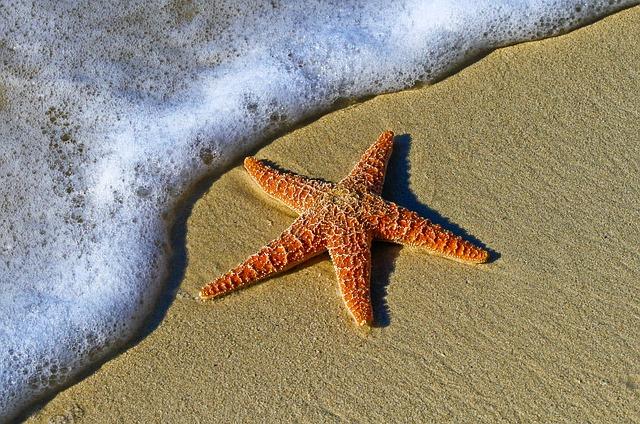- Introduction
- Physical Characteristics of the Ruby Seadragon
- Habitat and Distribution
- Diet and Feeding Patterns
- Conservation Status
- Conclusion
- FAQs
- References
Introduction
The Ruby Seadragon, a newly discovered species in the fascinating family of marine creatures, captivated researchers when first identified. In this article, we will explore in detail the physical characteristics that distinguish it, its natural habitat, feeding habits, and current efforts to conserve this rare creature.
Listed as part of seadragons — close relatives of seahorses — the Ruby Seadragon stands out because of its deep red coloration and other unique features. As more discoveries about its behavior and ecological role emerge, it’s critical to understand the conservation implications of such a rare species.
Physical Characteristics of the Ruby Seadragon

(Image: Pixabay/@Bruceandyqq)
The striking feature of the Ruby Seadragon is its bright ruby-red color, which helps it camouflage in deeper waters. Unlike its better-known relatives, like the leafy and weedy seadragons, the Ruby Seadragon lacks the elaborate leaf-like appendages but has small fin structures that aid in underwater movement.
Slightly smaller than regular seadragons, the Ruby Seadragon reaches a length of up to 23 cm (9 inches). Its compact size is an adaptation to its deep-water environment. The streamlined, tube-like body also differentiates it from its cousins.
This vivid red coloration may also play a significant role in protection. The red filter provides excellent camouflage at depths where red wavelengths are absorbed by the water and where the creature can appear almost invisible to predators.
Habitat and Distribution

(Image: Pixabay/@AdinaVoicu)
The Ruby Seadragon prefers deep waters as its main habitat, ranging around depths of 50 to 70 meters below the surface. It was only recently discovered off the coast of Western Australia during a deep-sea search operation. While the exact range of the Ruby Seadragon remains largely unknown due to the limited studies available, there’s evidence to suggest that it could be native to specific regions in southern Australia.
Unlike other seadragons that prefer shallow coral reefs teeming with seaweeds or kelp forests, the Ruby Seadragon resides in deeper waters closer to sandy and rocky seabeds. The mystery behind their habitat selection also raises questions about what evolutionary traits have allowed the creature to adapt so well to such dark environments.
Diet and Feeding Patterns

(Image: Pixabay/@guvo59)
Like other members of the seahorse family, Ruby Seadragons feed by vacuuming small crustaceans and plankton through their snouts. They do not possess teeth, so they rely on rapid suction forces to draw zooplankton into their elongated mouths. This makes them highly specialized feeders that play a critical role in controlling their ecosystem's microfauna balance.
Research into their feeding patterns has shown that Ruby Seadragons feed on mysids (small shrimp-like animals), copepods, and other tiny marine organisms. Their long tubular snouts allow them to pinpoint and quickly streamline prey into their gullet, giving them an edge in nutrient-scarce deep-water environments.
Interestingly, unlike dolphins or sharks that hunt in packs, Ruby Seadragons are solitary hunters. They utilize the slow-moving currents flow through their habitats to find prey and blend into their background, avoiding larger predators.
Conservation Status

(Image: Pixabay/@Pexels)
The Ruby Seadragon is considered vulnerable due to its rare status, meaning conservation efforts are crucial to its continued survival. The deep-sea nature of its environment has protected it from mass human activity to a degree, but it also means there is limited reliable data to monitor population trends.
Factors such as climate change, increasing ocean acidity, and pollution in surrounding waters can threaten the survival of Ruby Seadragons. Given that their ecosystems consist of delicate life forms in deep-sea zones, maintaining balance becomes even more essential.
Organizations such as marine research institutions and conservation groups are working to preserve the delicate ecosystems in which these dragons thrive, while continuing exploration and studies aim at understanding how broad or narrow their habitat ranges are.
Conclusion
The discovery of the Ruby Seadragon opened new windows into deep-sea biology and conservation. This species, with its unique adaptations to the deep ocean, underscores the importance of conducting deep-sea explorations to uncover the mysteries of our oceans. Understanding the habitat, feeding behavior, and the challenges that these creatures face is key to ensuring their preservation in a rapidly changing world. Through a global effort from conservationists, hope remains that the Ruby Seadragon can continue to thrive in its hidden underwater realm.
FAQs
How was the Ruby Seadragon discovered?
The Ruby Seadragon was discovered during a marine exploration off the coast of Western Australia in 2015. Researchers initially found the species from preserved museum samples, then later observed it alive via video footage captured by deep-sea divers.
What makes the Ruby Seadragon different from other seadragons?
Unlike its relatives, such as the leafy and weedy seadragon, the Ruby Seadragon lacks ornate appendages and possesses a bright red hue that helps it camouflage in deeper water environments.
Why is the Ruby Seadragon's coloration important?
This bright red skin coloration allows the Ruby Seadragon to appear almost invisible in the deep ocean since red light is absorbed at greater depths. This makes the species less visible to predators.
Are Ruby Seadragons endangered?
While they are not officially labeled as endangered, Ruby Seadragons are considered vulnerable due to their lower population numbers and highly specific deep-sea habitat requirements.
Can you see Ruby Seadragons in aquariums?
At present, Ruby Seadragons are not commonly kept in aquariums given their deep-water habitat. Their natural environment is vastly different from most other seadragons which are sometimes seen in public aquariums.

